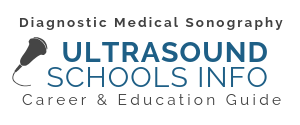Are you an undocumented student who wants to become a medical sonographer? Every year 98,000 undocumented students graduate from high school, but many don’t realize they can attend college with financial aid and scholarships. Learning what’s available to you takes time and research, but it’s worth it.
Here’s what to know about money for sonography school.
Federal Financial Aid is Off Limits
Unfortunately, undocumented students, including Deferred Action for Childhood Arrival (DACA) students, aren’t eligible for federal financial aid. That’s federal student loans, the Pell grant, and federal work-study. However, states, colleges, and private scholarships often use the Free Application for Federal Student Aid (FAFSA) to allocate their own money and might want you to fill it out anyway.
Check with a guidance counselor or a specific college’s financial aid office to find out if it will help you qualify for aid—it will depend on your state and the sonography program (some states have their own financial aid form). If you do fill out the FAFSA, ask about how to handle the social security number requirement. This federal fact sheet will guide you on the form.
Some States Give Financial Help
At the state level, a number of states offer help in the form of in-state tuition rates and possibly state financial aid (private schools operate according to their own fees and policies). In the states that don’t offer help—the majority—undocumented students might have to pay out-of-state tuition rates with no access to financial aid. It varies by institution.
In-state tuition
As of now, 19 states provide in-state tuition statewide at public universities to eligible students, either through state legislation or university Board of Regents decisions. The states are:
- New Jersey
- New Mexico
- New York
- Oklahoma (Board of Regents)
- Oregon
- Rhode Island (Board of Regents)
- Texas
- Utah
- Washington
In several other states, in-state tuition is available by institution. The University of Hawaii and University of Michigan grant in-state rates. In Kentucky, it’s offered at some institutions. In Virginia, students with DACA status receive in-state tuition.
Generally, eligibility requires attending high school in your state for a specified number of years and receiving a diploma or a GED certificate from that state, regardless of immigration status. Beyond these states, in-state tuition may be handled on a case-by-case basis.
State financial aid
According to National Conference of State Legislatures (NCSL), seven states offer state financial aid along with in-state tuition rates: California, Colorado, Minnesota, New Mexico, Oregon, Texas, and Washington. In 2019, New York also passed Dream Act legislation that allows undocumented students to apply for state aid.
In other states, policies are beginning to change to make free community college tuition or scholarships available to eligible students. Laws change, so it’s important to do up-to-the-minute research on your state and colleges within the state.
Each state handles its required financial aid forms a bit differently, so find out what you need to do. Some states have a state form to use instead of the FAFSA, such as the Washington Application for State Financial Aid (WASFA), California Dream Act Application, and New York DREAM Act. Start with your state’s Department of Higher Education website to find out what your state requires.
Locked-out states
States that don’t offer in-state tuition (or financial aid) are called “locked-out” states. These states require students to pay out-of-state tuition, but it’s possible that an individual college would offer in-state tuition. However, three states prohibit in-state tuition at public universities for undocumented students: Arizona, Georgia, and Indiana. And then there are two states don’t allow undocumented students to enroll at public institutions at all: Alabama and South Carolina.
Individual Universities Might Offer Financial Aid or a Scholarship
Even if a state doesn’t offer financial aid, individual institutions might give financial assistance. You might get both. When you find a specific sonography program, research whether the school has a scholarship program for undocumented students.
You can ask the school’s financial aid office or scholarship office. These questions provide a roadmap. If you’re worried about an institution’s attitude toward undocumented students, start by learning about your state’s policies and how friendly they are.
Private Scholarships
If you can’t get state or institutional aid, private scholarships are likely your best path. There are a number of resources. The Dreamer’s Roadmap is a free national app that helps you find scholarships.
The organization Dream.US offers scholarships to students with DACA or Temporary Protected Status (TPS) in locked-out states. Dream.US partners with more than 70 colleges in 16 states. Additional scholarship data bases include the following:
- Hispanic Association of Colleges and Universities
- Hispanic Heritage Foundation
- Hispanic Scholarship Fund
- MALDEF Scholarship Resource Guide
- Salvadoran American Leadership and Educational Fund
- LULAC National Educational Service Centers
Finding money for sonography school takes time and perseverance. The National Association for College Admission Counseling (NACAC) provides these resources on immigration and education for students to get started. Good luck. Be sure to stay up on federal and state developments.



 Joanna is a freelance journalist and content writer with a specialty in personal finance, paying for college, and understanding financial aid. Her articles have been published in the Washington Post, US News & World Report, Money, and Real Simple, among others.
She loves helping students and families understand the nuts and bolts of college. When she’s not writing, she enjoys running, hiking, traveling, and curling up with a good book in her Pacific Northwest home. Learn more about her writing at
Joanna is a freelance journalist and content writer with a specialty in personal finance, paying for college, and understanding financial aid. Her articles have been published in the Washington Post, US News & World Report, Money, and Real Simple, among others.
She loves helping students and families understand the nuts and bolts of college. When she’s not writing, she enjoys running, hiking, traveling, and curling up with a good book in her Pacific Northwest home. Learn more about her writing at